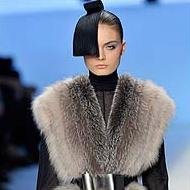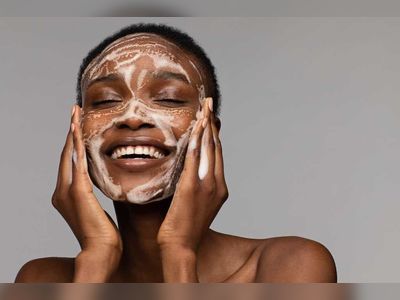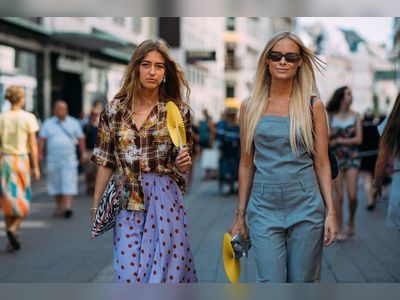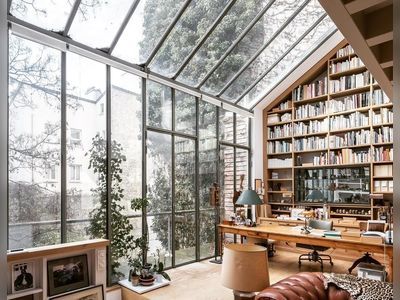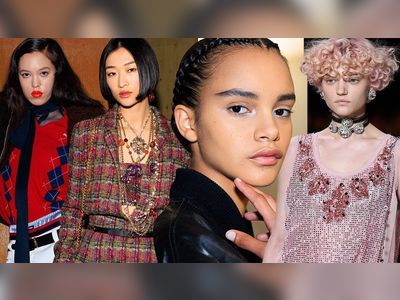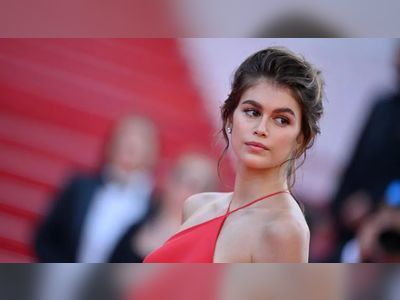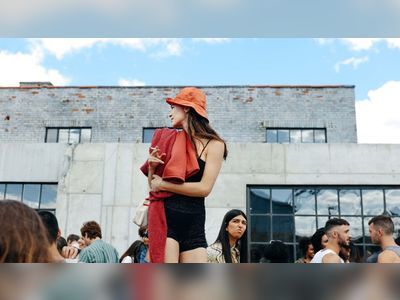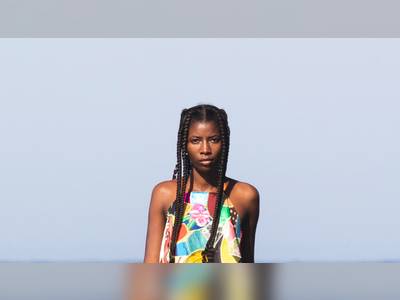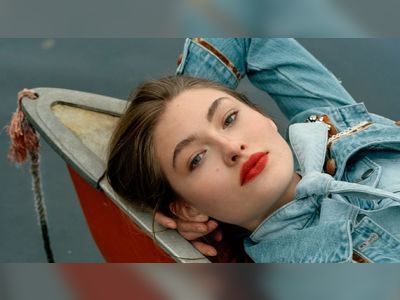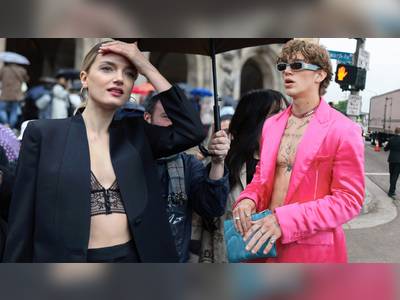Jacobs recreated 17th-century pannier skirts in cashmere and corduroy and paired them with 21st-century tailored jackets and polo-neck sweaters.
The metal "cages" which fashionable women of the era wore underneath their skirts to keep the wide shape were re-styled as a form of clearly visible large "belt" or jewellery for the hips.
The outfits were accessorised with a Nefertiti-style "super-Fez" in black plastic or satin and architectural chunks of stainless steel, in the manner of a modern building by Frank Gehry turned into gigantic necklaces, chokers and cuffs.
Jacobs, who was appointed Louis Vuitton's creative director in 1997, described his collection as "my French fashion fantasy".
“It’s something we’ve been working towards. I wanted this idealized form, the kind of show I always imagined was typically French. It’s not about any one era specifically. It’s about shapes and silhouettes and working with folding and draping, which can apply to any time.”
The collection, for next autumn/winter, was shown in dusky tones of pale sage, cream and rose, contrasted with black, with the emphasis always on the oversized shape.
Sculpted jackets with squared-peplums came with “tulip” skirts, with folds of fabric at either side, or balloon-leg trousers, tapering in at the ankle and shown in both pastel cashmere and black leather. An alternative trouser suit was comprised of a red, sleeveless tunic with matching red leather ‘zouave’ trousers.
Evening gowns featured a tight-fitting bodice allied to a balcony-style skirt, attached at the hips by a series of deep folds and were worn with musketeer-style gauntlet gloves.
The footwear was just as modern: clumpy shoes and boots balanced on a platform sole and stack heel.
